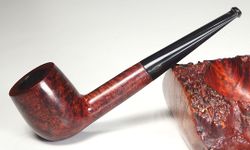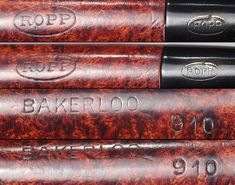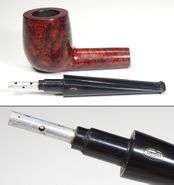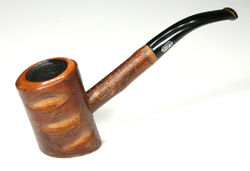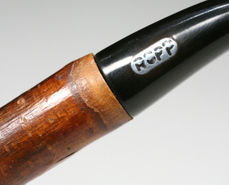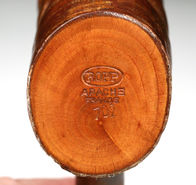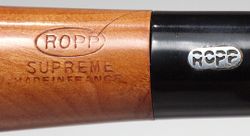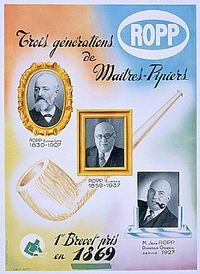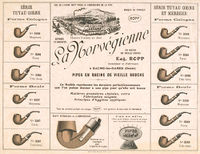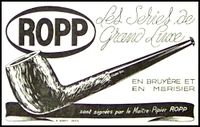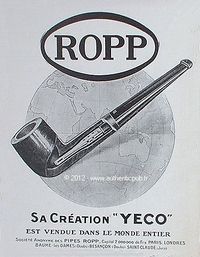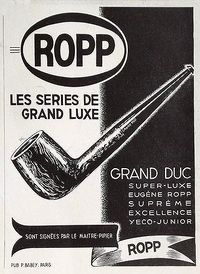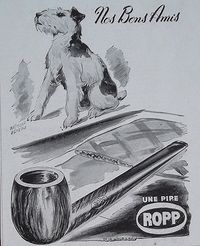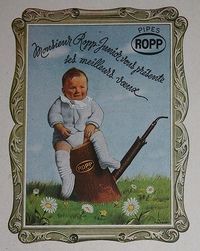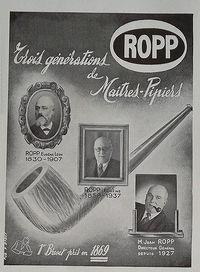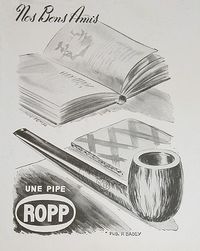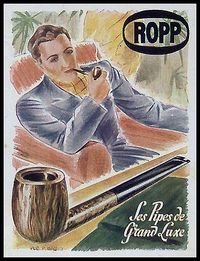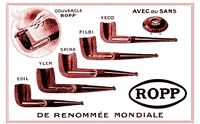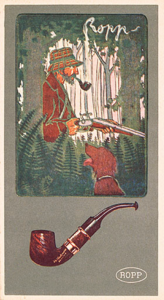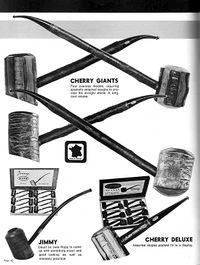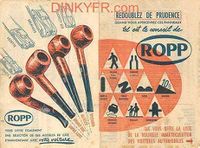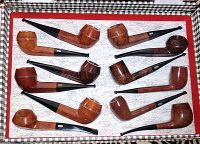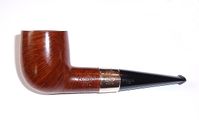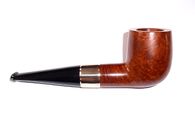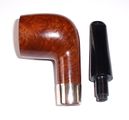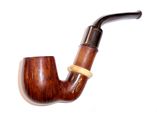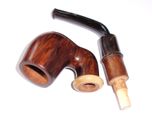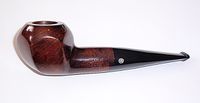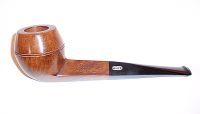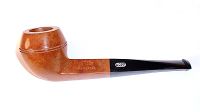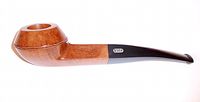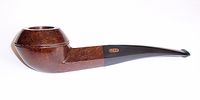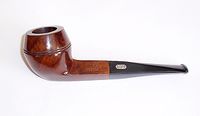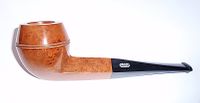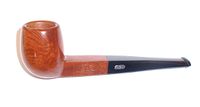Ropp: Difference between revisions
No edit summary |
No edit summary |
||
| Line 10: | Line 10: | ||
<center><gallery widths=250px heights=185px caption="Example and details, courtesy Doug Valitchka"> | <center><gallery widths=250px heights=185px caption="Example and details, courtesy Doug Valitchka"> | ||
File:ROPPApache01.jpg | ROPP01.jpg|Bakerloo | ||
File:ROPPApache09.jpg | ROPP07.jpg|Bakerloo detail | ||
File:ROPPApache10.jpg | ROPP08.jpg|Bakerloo detail | ||
File:RoppSupr01.jpg | File:ROPPApache01.jpg|Apache | ||
File:RoppSupr07.jpg | File:ROPPApache09.jpg|Apache detail | ||
File:ROPPApache10.jpg|Apache detail | |||
File:RoppSupr01.jpg|Supreme | |||
File:RoppSupr07.jpg|Supreme detail | |||
</gallery></center> | </gallery></center> | ||
Revision as of 14:54, 23 August 2020
Just a shortcut...
Eugène-Léon Ropp (1830 - 1907) had acquired a patent for a cherrywood pipe (wild cherry, lat.: Prunus avium) in 1869. In 1870 he established a workshop to manufacture such pipes in Büssingen (Bussang, Vosges mountains). Around 1893 the business moved into the former mill of Sicard (part of the community of Baume-les-Dames - Département Doubs, Upper Burgundy - from 1895 on).
The pipes were a big success in the export as well. Shortly before 1914 Ropp designated A. Frankau & Co. (BBB) in to be the exclusive distributor in the UK and it's colonies.
Probably in 1917 a workshop in Saint-Claude in the Rue du Plan du Moulin 8 was acquired to start the fabrication of briar pipes. In 1923 a small building in the environment of Saint-Claude, serving as a workshop for polishing, was added.
Even though cherrywood pipes were the mainstay of Ropp until the company finally closed down in September 1991. The company was taken over by Cuty-Fort Entreprises (Chacom, Jeantet, Vuillard, Jean Lacroix...) in 1994.
- Example and details, courtesy Doug Valitchka
Some "seconds" by Ropp: Golden Burl, Grande Morez, Nantua and Versailles.
- Various Ropp Ads and flyers
- Various examples of Ropp briar pipes
